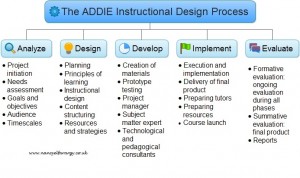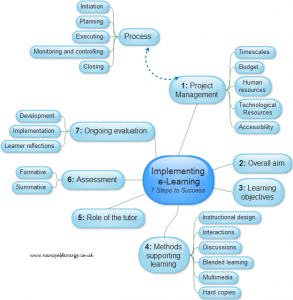
The Best of Both Worlds
In Part 1 we outlined some aspects of research in relation to the education, training and CPD of professionals in the workplace.
In this part of Research Matters, some insights into the pedagogy, implementation and future research directions of e-Learning are discussed.
Introduction
It looks like e-Learning is here to stay. It offers great opportunities for all educational institutions and workplaces to enhance induction, training, learning, and continuing professional development (to name a few). Its effectiveness however, largely rests upon sound instructional design and pedagogical approaches.
E-Learning can be defined as a synergy of learning, teaching and assessment that utilises online internet enabled technologies such as mobile, tablet, laptop or desktop computers. A blended learning approach perhaps offers the best of both worlds: (1) a combination of face to face group delivery that supports constructivist learning; and (2) individual time that supports internal dialogue, reflection, exploration and consolidation of learning. It should be kept in mind that the technology is simply a vehicle, amongst many, for learning – and when it is embedded well within a course of learning or programme, it should present a brilliant return to learners and course developers alike.
Getting Started
In implementing an educational technology programme or project, an understanding of both the principles of project management and the ADDIE process will perhaps prove beneficial (click on summaries below).
Underpinning themes across all these processes include on-going evaluation research and the conscientious application of the evidence base. In addition, at the centre of all these processes is linking e-Learning design to the needs of society. It marks the critical role of e-educators as agents for social change, who use their beliefs, knowledge, and skills to work for the greater good.
MOOCs
Massive Open Online Courses (MOOCs) are the latest trend in the world of Open Educational Resources (OERs) and e-Learning. They offer free access to a range of global online learning courses, delivered by the world’s leading universities and organizations. Aggregate providers include Coursera®, Open2Study, and edX®, and through these, lifelong, personal and professional development learning opportunities are available to anyone.
This unprecedented availability of online learning has further opened up discussion in the exploration and understanding of pedagogy, learning, engagement, instruction and evaluation.
- The concept of pre-learning and blended learning models.
- The efficacy of online learning compared to face to face delivery.
- Online assessment activities that support the construction of knowledge.
- Tutor-learner and learner-learner interactions (face to face and online).
However, MOOCs are not without their challenges. Reports relating to the ‘high’ attrition rates and issues with learner engagement have opened up discussions around learner analytics and pedagogical approaches. These notions are briefly outlined later.
In the Workplace
Miller’s (1990) model of competence offers a useful starting point for mapping out potential assessment strategies in professional education.
Leading to professional authenticity, Miller proposed a four-tier pyramidal structure:
- Knows (Knowledge): this is at the ‘base of the pyramid’ and provides assurance that an individual knows what is required to carry out professional functions. Assessments at this level usually include tests of knowledge, information gathering exercises and traditional multiple choice questions.
- Knows how (Competence): knowing how to use the knowledge accumulated is a skill that is gained through exploration, interpretation, and application. Assessments here involve the translation of findings and could include case study presentations and essay type questions.
- Shows how (Performance): demonstrating learning can be explained through day to day work practices. Assessments here could involve simulations and Objective Structured Clinical Examinations (OSCEs). Miller differentiated this level from the next by the fact that the individual is aware that he/she is being tested.
- Does (Action): performance is integrated into practice. Here assessment is aligned into day to day work, in which samples across various situations are collected, (using a variety of assessment tools and from multiple raters).
The first two (base) levels refer to cognitive functions and the later (higher) ones refer to behavioural competences. Taken together, expertise and professional authenticity could be viewed as the synergy of knowledge, skills, attitudes and behaviours gained and applied.
The key point here is perhaps aligning workplace learning, teaching and assessment – of any form and via any vehicle – with the levels that progress learners through to professional authenticity and expertise.
Research Directions
Upon reviewing the literature, a number of potential research directions emerge:
- The impact of gaining project management skills during instructional design projects.
- An investigation into the effect of gaps in project management competencies for instructional design projects.
- An in depth study of learner analytics, e.g., assessment of progress and facilitators for success.
- Learner analytics research into the success of MOOCs (including populations and reasons for enrolment).
- The science of learning, teaching and assessment through educational technology.
- Exploring, comparing and contrasting workplace e-Learning engagement.
- The role of e-assessment in assessing and enhancing learning.
- The role of discourse and communities on the construction of knowledge in online environments.
- An exploration of assessment strategies associated with Miller’s four tier model of professional competence.
Summary
The learning sciences domain has seen a plethora of tools, and each tool in its era was considered to be just the revolution that educators, researchers and learners required. The rate at which educational technology evolves often means that tools that are in vogue today may become out-dated tomorrow.
However, these are indeed exciting times and in looking forward, there is much to explore, understand and develop. E-Learning has become mainstreamed into many workplaces and professions, and the opportunities for enhancing learning, personal and professional development are great.
References
Bele, J. L., & Rugelj, J. (2007). Blended Learning – An Opportunity to Take the Best of Both Worlds. International Journal of Emerging Technologies in Learning, 2(3), pp. 1–5.
Benson, A. D., Moore, J. L., & Van Rooij, S. W. (Eds), (2013). Cases on Educational Technology Planning, Design, and Implementation: A Project Management Perspective. doi:10.4018/978-1-4666-4237-9.
El-Farargy, N. (2009). The Concepts and Practices of Lifelong Learning (book review). Reviews: A Guide to Publications in the Physical Sciences. Number 18, Volume 10, Issue 1, pp. 64-65. Hull: UK Physical Sciences Centre, Higher Education Academy. ISSN 1756-9532.
El-Farargy, N. (2011). Essentials of Online Course Design: A Standards-Based Guide (book review). Reviews: A Guide to Publications in the Physical Sciences. Number 22, Volume 12, Issue 1, pp. 18-20. Hull: UK Physical Sciences Centre, Higher Education Academy. ISSN 1756-9532.
El-Farargy, N. (2012). Exploring the VLE: Pedagogical and Technological Perspectives. E-Health Analytics, Research Stream (abstract). British Computer Science Health Informatics Conference, Grand Central Hotel, Glasgow.
El-Farargy, N. (2013). Refresher Training in Clinical Psychology Supervision: A Blended Learning Approach. In A. D. Benson, J. L. Moore, & S. Williams van Rooij (Eds.), Cases on Educational Technology Planning, Design, and Implementation: A Project Management Perspective, pp. 295–317. Hershey: PA: Information Science Reference.
Ghiabi, E., & Taylor, K. L. (2010). Assessment of Surgical Competence in North American Graduate Periodontics Programs: A Survey of Current Practices. Journal of Dental Education, 74(8), 869–875.
Kizilcec, R. F., Piech, C., & Schneider, E. (2013). Deconstructing Disengagement: Analyzing Learner Subpopulations in Massive Open Online Courses. In Third International Conference on Learning Analytics and Knowledge (LAK) (pp. 170–179). Leuven, Belgium.
Miller, G. E. (1990). The assessment of clinical skills/competence/performance. Academic Medicine, 65(9).
Newton, R. (2011). Brilliant Checklists for Project Managers: Your Shortcut to Success. (Brilliant Business), 2nd Edition. Harlow: Pearson Business. ISBN 978-0-273-74076-6.
Perry, W. J. (1999). Forms of Ethical and Intellectual Development in the College Years: A Scheme. San Francisco: Jossey-Bass Inc.
Phillips, J. J. (2003). Return on Investment in Training and Performance Improvement Programs (2nd edition). London: Butterworth Heinemann.
Smyth, K. & Mainka, C. (2010). Pedagogy and Learning: A Practical Guide. Edinburgh: Edinburgh Napier University. ISBN 0-902703-84-6.
Vai, M. & Sosulski, K. (2011). Essentials of Online Course Design: A Standards-Based Guide. Abingdon, Oxon: Routledge. ISBN 0-203-83831-9.
Van Rooij, S. W. (2010). Project Management in Instructional Design: ADDIE is not enough. British Journal of Educational Technology, 41(5), pp. 852–864. doi:10.1111/j.1467-8535.2009.00982.x.
Yusop, F. D., & Correia, A.-P. (2012). The Civic-Minded Instructional Designers Framework: An alternative approach to contemporary instructional designers’ education in higher education. British Journal of Educational Technology, 43(2), pp. 180–190. doi:10.1111/j.1467-8535.2011.01185.x.
Copyright
© Nancy El-Farargy, 2013.

This work is licensed under a Creative Commons Attribution-NonCommercial-NoDerivs 2.5 UK: Scotland License.
Explore More

